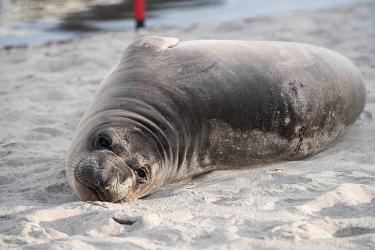While NOAA’s California Veterans Corps members are typically deployed to local streams to help restore and monitor endangered and threatened salmon and steelhead, lately they’ve taken on another mission - restoring endangered White abalone. Veterans Corps members have been supporting NOAA’s work on a pilot effort building short-term abalone fixed enclosures, or SAFEs.

A California Veterans Corps member builds concrete bases for the SAFEs.
White abalone, a NOAA Species in the Spotlight are endangered gastropods, sea snails, that have an iconic California history. Recently an important part of commercial and recreational fisheries, and subsistence fishing for native Americans for thousands of years prior, their populations declined steeply in the 1990s. Now they’re listed as endangered because of overfishing, disease and other threats.

Completed SAFEs being readied for deployment.
Successful reproduction relies on dense populations, so small numbers out in the wild limits their ability to recover without support. To help increase reproductive success, NOAA grows baby abalone in nurseries, then outplants them in the wild. The outplanting of these bottom dwellers happens in the water, but there is a lot to do for abalone topside that veterans and restoration partners are doing to help.
The Veterans Corps members are building SAFEs as part of a pilot outplanting effort led by NOAA and restoration partners. When nursery-reared baby abalone are acclimated in safe enclosures prior to release by divers into local kelp forests, the hope is that their chances of long-term survival will improve.

NOAA Fisheries staff surveying a beach nourishment project area for abalone.
Veterans Corps members’ working on this pilot help NOAA make the next leap in white abalone restoration. These efforts are supported by partners from The Bay Foundation, Aquarium of the Pacific and Paua Marine Research Group.
The California Veterans Corps effort, part of NOAA’s Veteran and Conservation Corps Program, is providing a broad set of natural resource job skills to members. Research and monitoring of SAFEs to understand their impacts on abalone restoration is helping members gain field experimentation skills. Blending the abalone fishery knowledge with the growing understanding of coastal ecosystem science is helping create well rounded and informed Corps members to continue their natural resource professions into the future.



